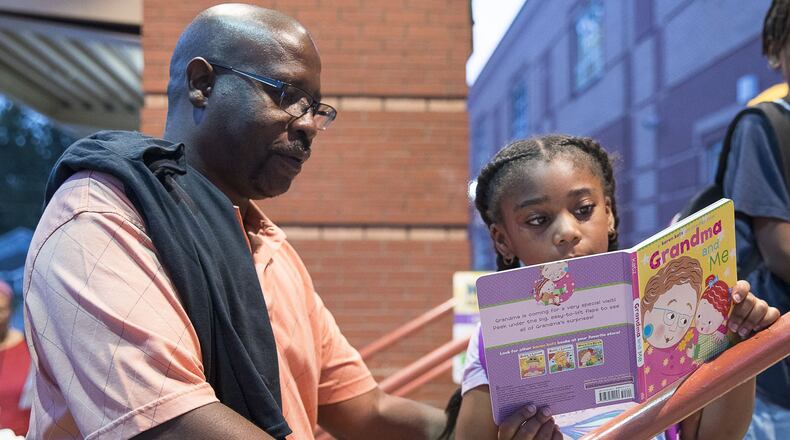When I had my first child, the advice to me about how to raise a strong reader was simple: Read to her all the time and leave good books around.
That guidance reflected the belief that learning to read was instinctual, much in the way that the acquisition of language is. The manifestation of this belief in the classroom became a balanced literacy method, a middle ground between decoding words through systematic phonics versus whole language where young readers use cues, pictures or context to identify words and decode the text. However, phonics was minimized in many districts.
But a deepening canon of brain research — dubbed the science of reading — has led to a concerted effort now to change how we teach reading. “Kids learn language just by being in an environment where language is spoken. Reading does not develop that way, a real critical distinction,” said reading expert Ryan Lee-James, director of the Rollins Center for Language and Literacy at the Atlanta Speech School. “In fact, those language areas of the brain have to be reorganized or programmed for children to be able to read.”
Proponents point to the obvious indicator that current reading approaches aren’t succeeding despite decades of prioritizing literacy. The National Assessment of Educational Progress found only about 35% of U.S. fourth graders demonstrated proficiency at reading in 2019. In Georgia, 32% showed proficiency.
Impressed by Mississippi’s impressive NAEP reading gains after embedding evidence-based reading instruction in its schools, other states are taking notice. North Carolina just passed a law mandating reading instruction “grounded in the current science of reading regarding the acquisition of language (syntax, semantics, morphology and pragmatics), phonological and phonemic awareness, accurate and efficient word identification and spelling, world knowledge and comprehension.”
The science of reading is the basis of a classroom approach called structured literacy, which entails drilling down on foundational skills in K-2, explicit phonemic awareness, word recognition, spelling, and syntax at the sentence and paragraph levels.
“The whole language approach is easier because it says you will read to your kids and they will love it and they will pick it up,” said local teacher Rachel Platt, who, as @mindfulteacherrachel on Instagram and TikTok, has gained a following. “But it doesn’t work for a lot of kids.”
For example, Platt said a hallmark of whole language is having kids look for “cues” to guess their way through a predictable text. “Because this curriculum depends so much on compensation methods rather than applying any phonics directly to text, third and fourth graders who no longer read predictable text in class with obvious pictures suddenly are struggling readers,” she said.
Recent independent reviews deemed ineffective two top popular whole language programs used by many districts, including throughout Georgia, prompting school leaders to rethink how they teach reading.
“There are a lot of veteran, very talented teachers, even some new teachers just coming out of school, who are having to stop for a moment, reflect and ask, ‘Is what I have been doing in my class or what I learned in my teacher prep program really aligned to the very best practice?’” said Grant Rivera, superintendent of Marietta City Schools, which is committed to using the science of reading.
Despite a master’s degree in education, Sherri Lucas-Hall recognized she was missing essential training in how to teach kindergarteners. While about 35% of children could be considered instinctual or natural readers, Lucas-Hall said most need more explicit and foundational lessons than schools provide. “What I was taught was that if you take children who were never surrounded by books, expose them to books and reading and a love of reading, they will catch it,” said Lucas-Hall, who now runs Designed to Teach Tutoring Services in Gwinnett. “But that is incorrect. That is not how you teach children to read.”
The science of how the brain learns to read is complex and cannot be distilled in a weeklong training seminar. Fulton County Schools will spend $3.26 million to train more than 3,000 teachers, principals and central office administrators in the science of reading. It is one of the first steps in Fulton’s $90 million, three-year “Every Child Reads” plan to help students who fell behind during the pandemic and to build a culture around literacy.
“We have to make the science of reading available to all teachers because our kids are depending on it,” said Lee-James, who is consulting with Marietta Schools. “Quite frankly when you look at our national data, our country is depending on it.”
About the Author
The Latest
Featured



